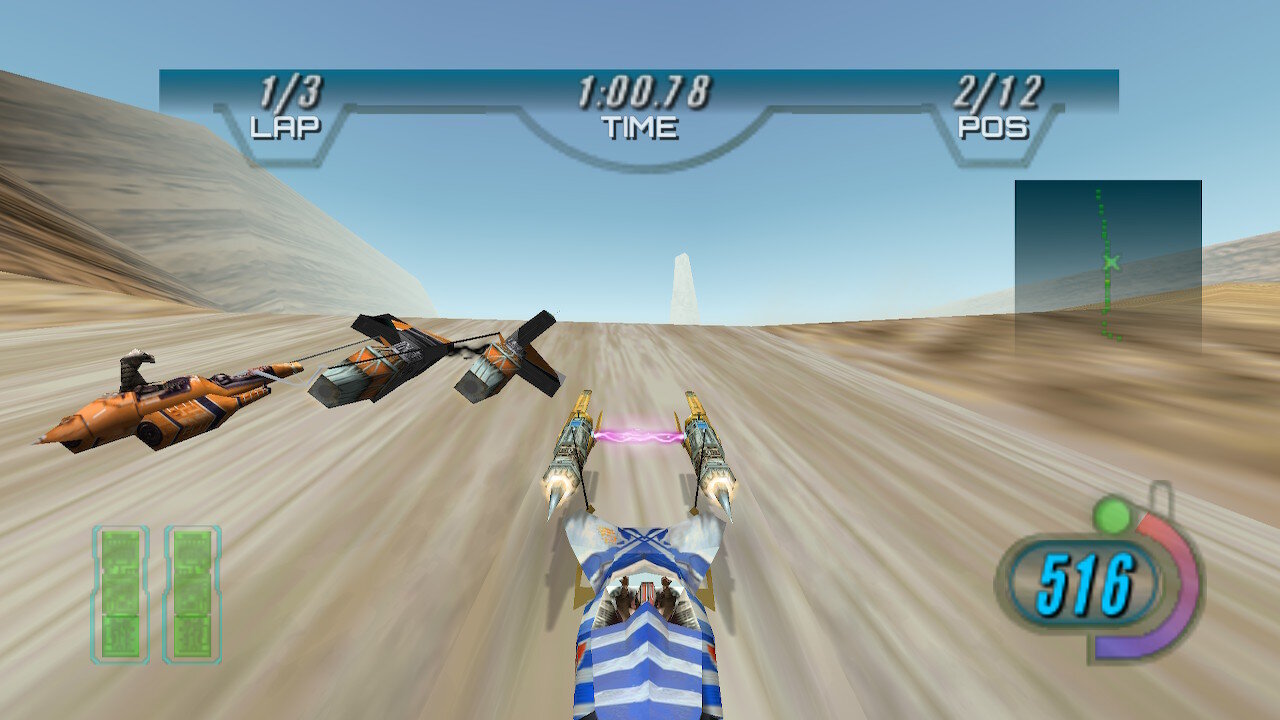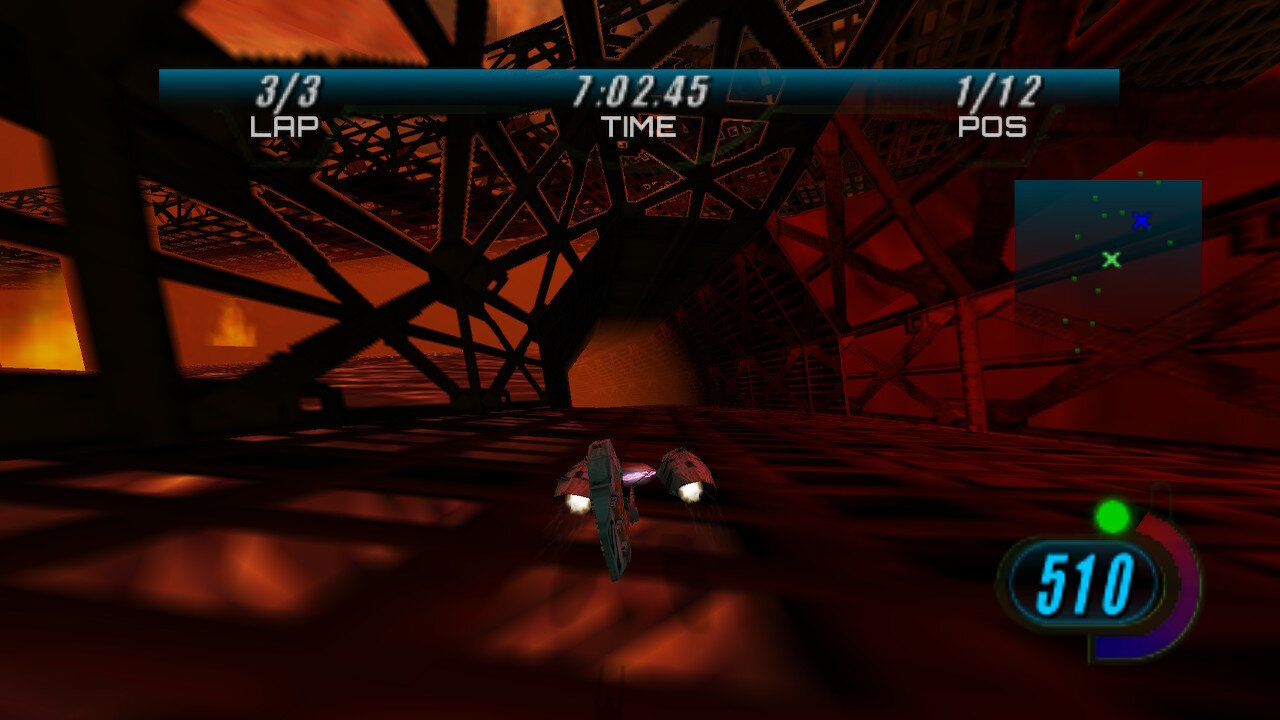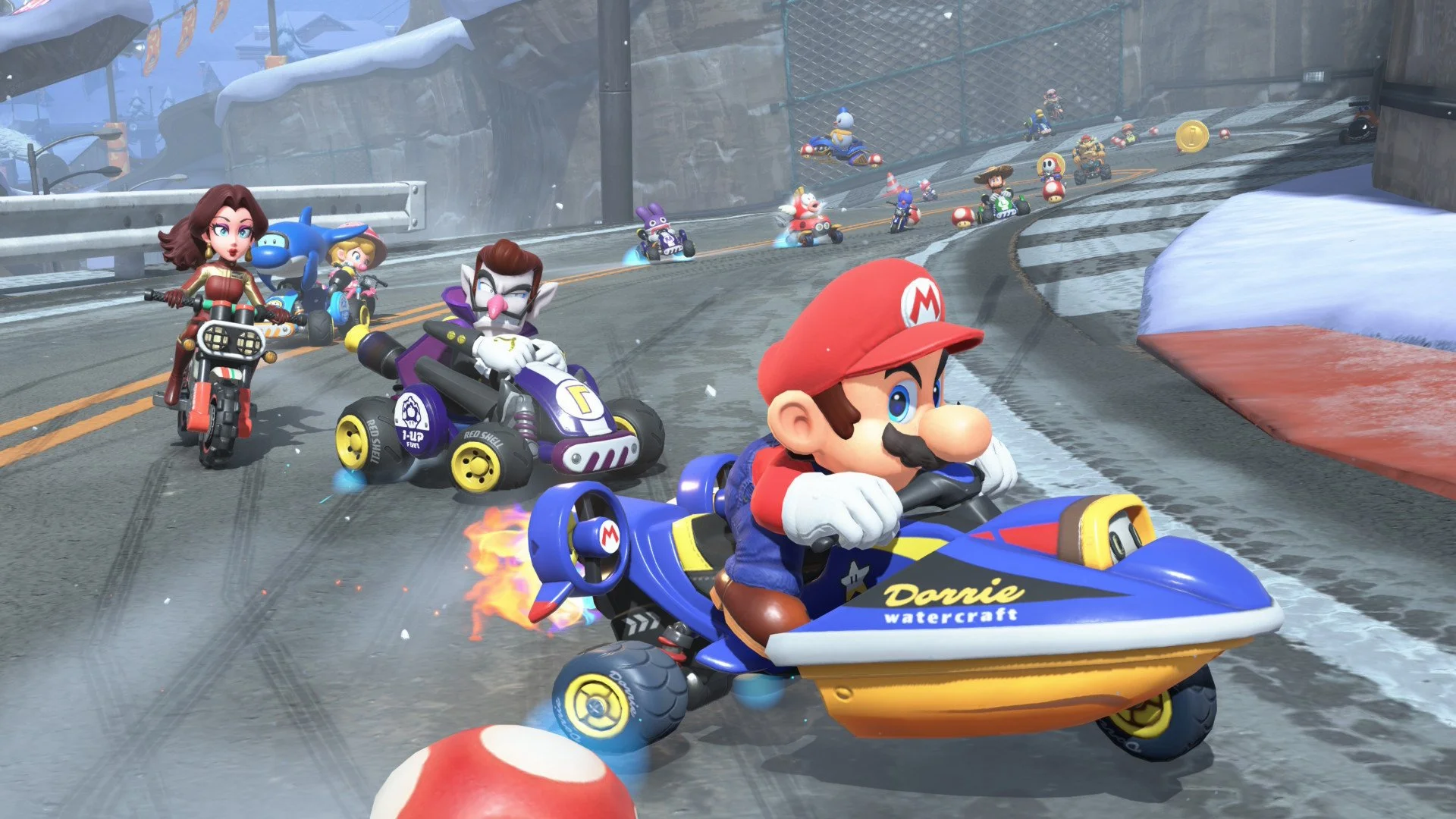Star Wars Episode I: Racer Review (Nintendo Switch) - Be Quick, Or Be Dead
/LucasArts, how we miss thee. Way back in the innocent old days of 1999, the legendary game studio released Star Wars Episode I: Racer, a game so technically advanced for its time that it pretty much required the Nintendo 64 Expansion Pak to run at anything past 15 FPS, and looked fantastic on both the N64 and Dreamcast (I owned and loved both versions). It was also released on the PC, which was undoubtedly the best-looking of the original releases. I consider it among the best Star Wars games ever and one of the most fun futuristic high-speed anti-gravity racers, and this latest port, which is more of a rerelease than a remaster, reminded me why.
Star Wars Episode I: Racer features a vast cast including 23 of the intergalactic racers featured in George Lucas’ high-energy film, all with unique voices and in pods with different strengths and weaknesses. Sebulba can famously shoot flames from his pod, as he does in the deleted scene in The Phantom Menace. Racers can tilt on their sides to squeeze through tight spaces, activate a temporary turbo boost to recover lost ground, and weave expertly through snakelike corridors through a combination of braking and positioning.
You Mean He Has To Complete Two More Circuits?
You can decide on the payouts for prize winnings (here’s a hint to greatly help any first-time players: go with Winner Takes All every time, and endeavor to win every track in first place, and be careful - it’s very easy to accidentally change the winnings on the track select screen), and in turn, the credits you earn from races can be used to upgrade your pods in various categories, including Top Speed, Acceleration, Braking, Turning, Cooling, and Repair, which can be very important on the more narrow or deadly tracks.
Though the various planets are limited to about eight or so, the track selection makes good use of the environmental elements and excels at showing you different parts of the planets you’ll be racing on. There are 25 tracks in all, and while some of them repeat certain sections, they offer increasing and varied challenges. Some of the tracks are rather long and can take up to eight minutes to complete. On the more difficult races, you’ll be tasked with careful management of your racer’s maintenance as well as needing to corner carefully.
I used to bulls-eye Womp Rats in my T-16…
Star Wars Episode I: Racer’s strengths are all on display here, and the game does not drop the ball on presentation, though it also doesn’t do much to improve what already worked. The Switch port does now have motion control options with the two Joycons. I’m not sure what I was expecting, maybe something closer to the lines of the equally excellent Arcade pod-racing game, but I found that the motion controls were fun and immersive, but due to the precision of the Switch Pro Controller’s stick, I preferred it for the more advanced circuits. The HD Rumble was wonderfully implemented, and really brings the game to life, which is doubly helpful since the sound effects and voice clips were unfortunately not re-recorded or remastered.
Graphically, Racer goes above and beyond, almost to the point where the game can be considered more of a remaster than a port. The framerate is solid and consistent at a locked 60FPS even in split-screen mode. Textures have been up-ressed, and look a lot less jagged with anti-aliasing across the board. All of the game’s many (and sometimes odd) FMV sequences have been remastered as well.
There are a few quirks, though. Some of the text has not been properly upscaled, such as the track placement markers at times at the top. There were several minor glitches where my pod phased through a track completely after landing at an angle, but most of these were isolated to one of the final tracks. I don’t have my Dreamcast handy to test it out properly, but on some tracks, the draw distance didn’t seem as long as it used to be. Also, an unfortunate consequence of the field of view being stretched from 4:3 to 16:9 is that the map is a little further off-center, making it so you have to shift your eyes ever so slightly further off the action in order to look at the track map to anticipate certain turns or shortcuts. Now, if you’ve memorized the tracks, this isn’t a big deal, but coming back to the game after so many years, it was a bit jarring.
Another missed opportunity here is that there’s no online play at all. This is so disappointing. I would have been happy with even just online leaderboards for the Time Attack mode, so I could compare my times with fellow racers.
I Am A Pod-Racer, Like My Father Before Me
I thoroughly enjoyed my time revisiting Star Wars Episode I: Racer. Despite its occasional quirks and missed opportunities, it does deliver on a consistent, mostly-bug-free performance that made me pine for both LucasArts’ heyday, and the golden age of high-speed futuristic racers, which have all but disappeared as a sub-genre. If you love high-speed racing games and have never taken this trip to a galaxy far, far, away, now’s your chance to see what the craze was all about.
8/10
Highlights
High-speed racing physics and pod progression hold up well
John Williams’ soundtrack and HD Rumble immerse aurally and viscerally
Motion controls are fun and add to the experience
Some minor odd graphical issues are left unresolved, plus a couple of glitches
No online play or extras
What I’ve Played
Eight hours of high-octane racing action



















Death Stranding 2: On the Beach delivers higher visual fidelity, consistent performance across the board, and a few new tricks that make gameplay more accessible, challenging, and fun. If you have the patience and come in with an open mind, you’ll be in an exclusive group of people who will struggle to describe this experience to anyone else.